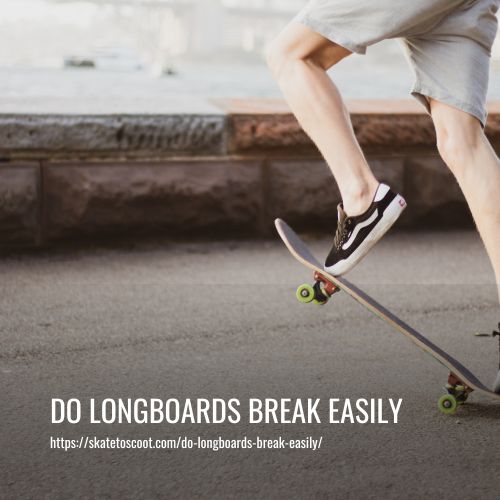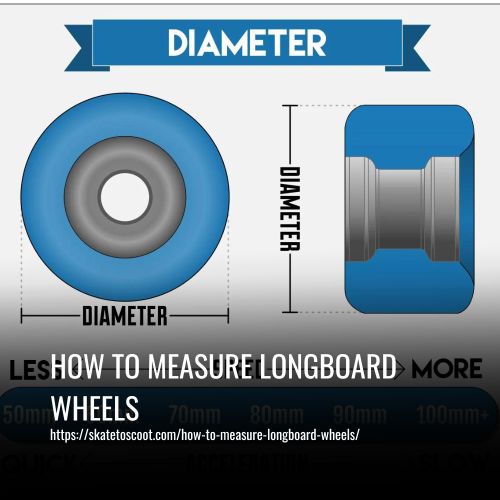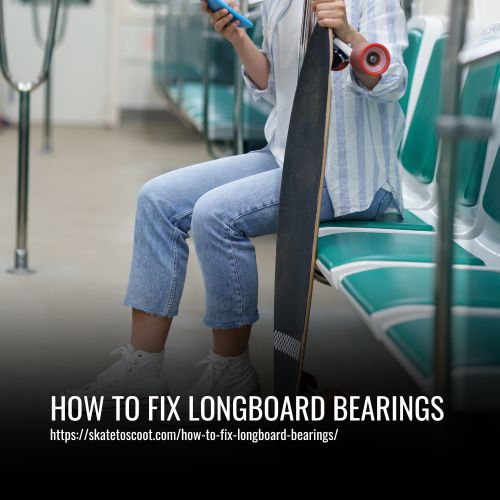As an Amazon Associate we earn from qualifying purchases.
Longboards, like any other type of skateboard, can potentially break due to various factors, such as the quality of the board, its construction, and usage. When it comes to longboarding, your riding style plays a significant role in determining the durability of your board. If you prefer a more aggressive riding style, such as attempting tricks or riding on powerful waves, your longboard may be more susceptible to damage compared to riders who stick to cruising on flat surfaces.
The quality of the longboard itself also plays a crucial role. Professional surfers, for example, often opt for high-performance longboards with reinforced construction to withstand the rigors of medium to steep waves. On the other hand, beginner surfers may choose a more forgiving and durable board that can withstand common bumps and scrapes.

Strength Of Longboard Materials
The strength of a longboard largely depends on the materials used in its construction. The most common materials used are maple and bamboo due to their durable properties. These woods have natural strength and resistance to breaking and splintering, making them reliable choices for longboard construction.
In some cases, composite materials like fiberglass or carbon fiber are incorporated into the design to enhance strength and rigidity. These materials offer additional benefits in terms of durability, as they can withstand high impact forces and distribute the stress more evenly throughout the board.
Types Of Materials Used To Make A Longboard
Longboards are typically made with a combination of different materials, each serving a specific purpose to ensure the board’s strength and durability. The deck, which is the top surface of the board, can be made of wood or composite material. Wood is commonly used as it offers a natural flexibility and a traditional feel to the board. Composite materials, such as fiberglass or carbon fiber, can be added to enhance the deck’s strength and rigidity.
The trucks, which are the metal components that attach the wheels to the board, are usually made of sturdy metals like aluminum. This ensures stability and resistance to breaking under the weight and pressure of the rider. The wheels and bushings, on the other hand, are typically made of plastic. While plastic may seem less durable, it offers a balance between grip and flexibility, allowing for smoother rides and better maneuverability.
Impact Testing
Impact testing is a crucial process used by many longboard companies to assess the durability and strength of their boards. By subjecting the boards to simulated real-world impacts, such as dropping weights on different parts of the board, companies can provide riders with valuable information about the board’s ability to withstand regular use.
This testing helps determine the board’s resilience and whether it is built to withstand the forces and harsh conditions riders often encounter while on the road. The results of these tests are often published by companies, allowing riders to make informed decisions about which longboard is best suited for their needs.
How To Make Longboard Tough
To make your longboard tough and durable, there are a few steps you can take. First, keep your board clean and dry to minimize the risk of damage from moisture or dirt buildup. This can be done by wiping it down after every use and storing it in a dry place.
Regularly inspect your longboard for signs of wear and tear, such as cracks or splintering. By addressing any potential weak spots early on, you can prevent them from turning into bigger issues down the line. If you do notice any damage, it’s essential to repair or replace the affected parts promptly.
1. Weak Spots
Longboards can have weak spots that are prone to damage or breakage. One common weak area is around the trucks and wheels. Improper mounting or loose screws can cause cracking or deformation in these parts. Regularly inspect and tighten the screws to prevent these issues.
Furthermore, it is important to regularly inspect and replace components such as bearings and bushings on your longboard to ensure its functionality and safety, as these parts can wear down or break due to excessive stress over time.
2. Maintenance
Regular maintenance is crucial for the longevity and durability of your longboard. It is important to conduct routine checks on all the hardware to ensure that everything is properly tightened. Inspecting the board for any signs of wear or damage is also essential in order to catch any issues early on and prevent them from escalating.
Cleaning your longboard regularly is another important aspect of maintenance. This helps to remove dirt, debris, and saltwater residue that can accumulate over time and potentially cause damage. It is recommended to use a mild soap or a specialized longboard cleaner and a soft cloth to clean the board gently.
What To Do If I Broke My Longboard
If your longboard is broken, it is advisable to seek professional repair. An experienced technician will evaluate the damage and determine if it is repairable or if a replacement is necessary.
Repairs may involve the replacement of damaged parts or the reinforcement of weakened areas using additional materials, depending on the type and extent of the damage. It is important to consider that attempting to repair the board on your own may result in further damage and render it unfixable.
Average Life Span Of Longboard
The average lifespan of a longboard can vary depending on factors such as the materials used and frequency of use. Generally, with proper care and maintenance, most longboards can last for two to five years.
To ensure a longer lifespan for your longboard, it is important to take good care of it and perform regular inspections. This includes checking for any signs of damage or wear and tear, and promptly repairing any issues that arise. It is also advisable to keep your board stored in a cool, dry place when not in use, as exposure to extreme temperatures or moisture can weaken its structure.
Which Type Of Longboard Breaks Easily?
When it comes to longboards, the type that is more likely to break easily is a low-quality board made from cheap materials or poorly constructed. These boards are not built to withstand the stresses of regular use and may break or snap under pressure.
Additionally, longboards that are used for extreme activities such as tricks or downhill rides are also more prone to breaking. The high impact and stresses they endure can cause the board to weaken and eventually break.
To choose a longboard that will hold up well over time and not break easily, it is important to consider both the quality of the materials and construction. Investing in a high-quality board that is designed for your specific riding style and intended use can help ensure its durability and longevity.
Which Type Of Longboards Are Not Easily Breakable
When it comes to selecting a longboard that won’t easily break, considering both quality and intended use is key. Opting for a high-end board crafted from superior materials can greatly enhance its durability. These boards are designed to withstand more stresses and strains, making them less prone to breaking.
On the other hand, longboards that are used for extreme or aggressive activities, such as tricks or downhill rides, are more likely to break due to the high impact and stresses they endure.
Are Longboards Durable?
Yes, longboards are generally durable when properly cared for. High-end longboards made from high-quality materials are particularly sturdy and can last for many years with the right maintenance. It is important to consider both the quality of the board and your riding style when choosing a longboard.
Different types of longboards are designed for different types of waves and riding styles, so selecting the right longboard for your needs is crucial. Additionally, taking care of your longboard by avoiding rough surfaces and using protective gear like elbow pads and leg ropes can help prevent damage. With proper care and attention, longboards can be a durable and reliable tool for enjoying the sport of surfing.
FAQs
Yes, longboards are generally considered more stable than skateboards due to their longer and wider decks. This increased stability allows riders to maintain better balance, making longboards a great choice for beginners or those looking for a more relaxed ride.
Longboards come in various sizes to accommodate different riding styles and preferences. A shorter board, usually around 33-42 inches, is better for cruising while a longer board, ranging from 42-60 inches, is ideal for downhill racing or carving. The size of the board also affects its maneuverability and speed capabilities.
Longboards, like any other sports equipment, can break if subjected to extreme impact or stress. However, they are designed to withstand a considerable amount of regular use and are usually more durable than skateboards. Proper care and maintenance, such as avoiding rough surfaces and regularly checking for any signs of damage, can help prolong the lifespan of your longboard.
Longboards are suitable for use on rougher or bumpier surfaces, as their wider wheelbase offers additional stability and their larger wheels can help absorb some of the shocks from bumps. It is important to remain aware of nearby obstacles when skating, as loose rocks or debris may result in an accident if not avoided.
Conclusion:
While longboards may have a reputation for being fragile, it’s important to remember that with the right care and maintenance, they can last for years. Don’t let the fear of potential breakage hold you back from enjoying the exhilarating experience of cruising on a longboard.
So go ahead, take the plunge, and ride with confidence knowing that with a little TLC, your longboard will stand the test of time. Happy shredding!
Amazon and the Amazon logo are trademarks of Amazon.com, Inc, or its affiliates.



